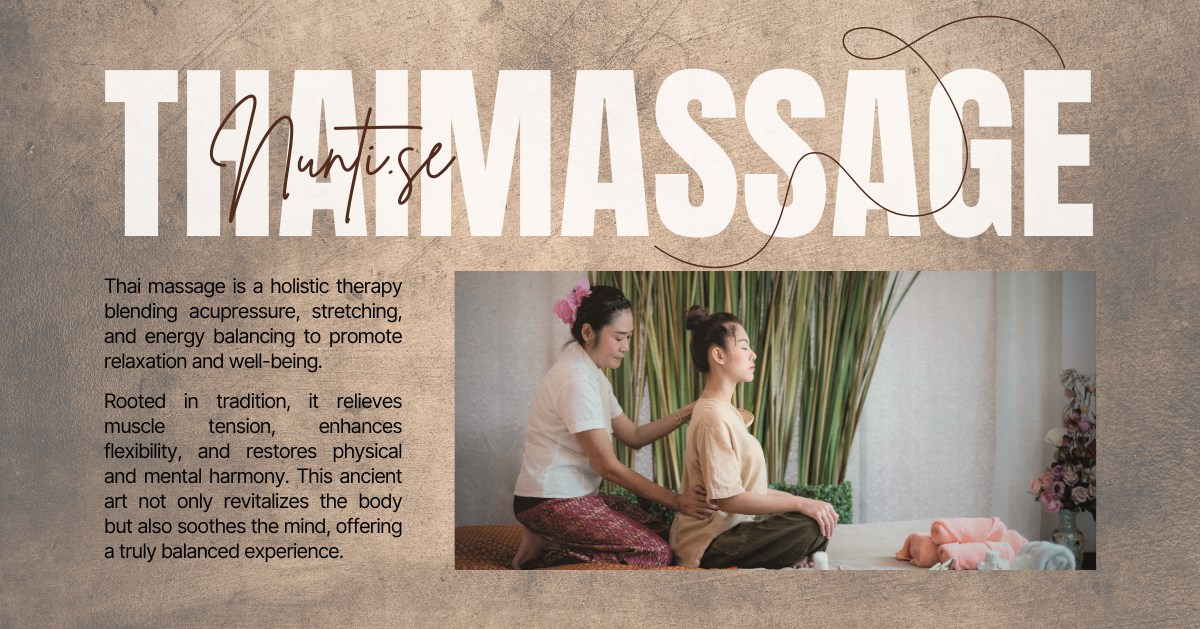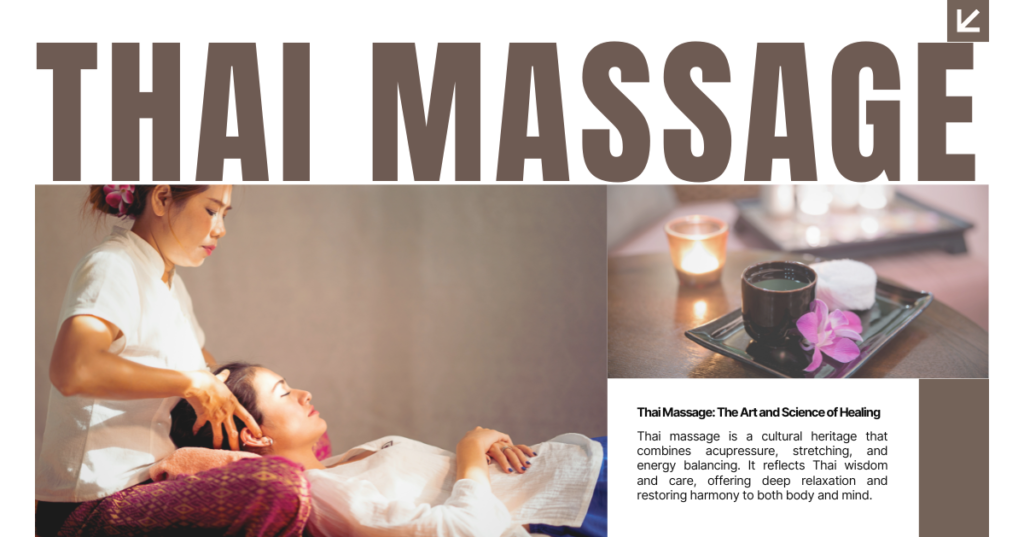Traditional Thai massage practitioner applying acupressure technique to promote relaxation and balance.
Thai massage, or “Nuad Thai,” is a traditional healing art that combines acupressure, stretching, and energy balancing techniques to promote holistic health and restore balance to the body and mind.
1. Definition and Key Features of Thai Massage
Thai massage integrates traditional wisdom with contemporary health practices, focusing on muscle relaxation, joint stretching, and alleviation of discomfort.
Key features include:
- Acupressure: Relieves muscle tension.
- Stretching: Enhances flexibility and joint balance.
- Internal Balance Restoration: Traditional concepts link Thai massage with energy lines (“Sen Sib”) that help restore balance to the body and mind.
2. How Thai Massage Works
Thai massage operates through the following principles:
- Stimulating Blood Circulation: Aids recovery from fatigue.
- Muscle Relaxation: Reduces pain and accumulated tension.
- Balancing Joints and Bodily Systems: Promotes efficient movement.
Traditionally, Thai massage involves working along energy lines known as “Sen Sib.” Modern techniques now incorporate physical therapy principles for clearer and more sustainable results.
3. Benefits of Thai Massage
Thai massage offers both physical and mental benefits, including:
- Alleviating Chronic Pain: When performed correctly.
- Enhancing Blood and Lymph Circulation: Revitalizes the body.
- Improving Flexibility and Joint Function: Through stretching techniques.
- Promoting Mental Relaxation: Reduces stress and improves sleep quality.
A Thai massage practitioner performing a relaxing head massage to promote deep relaxation and restore energy balance.
4. Who Can Benefit from Thai Massage?
Thai massage is suitable for individuals seeking:
- Muscle Aches Relief: Especially neck, shoulders, and back pain from physical activities.
- Stress and Fatigue Recovery: For those looking to rejuvenate their health and relax.
- Improved Flexibility: To enhance joint mobility and flexibility.
- Preventive Muscle Care: To avoid accumulated tension and chronic pain.
Precaution: Individuals with chronic conditions, such as spinal issues or heart disease, should consult a physician before undergoing Thai massage to ensure safety.
Conclusion
Thai massage is a valuable cultural heritage that serves as both a healing art and a holistic health practice. By combining acupressure, stretching, and energy balancing techniques, Thai massage promotes health restoration while offering relaxation and balance to life.
This article provides a foundational understanding of Thai massage, encouraging readers to explore its true value.
Source:
Standards for Thai Massage
Source: Foundation of Thai Massage and Traditional Medicine (FTMAT)
Additional Information:
The concept of Sen Sin, or ten energy lines, is deeply rooted in traditional Thai medicine, passed down through generations as a fundamental principle in Thai massage.


